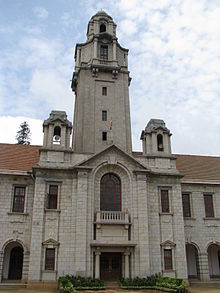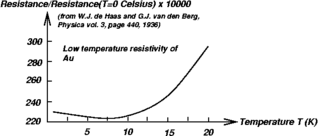
In physics, the Kondo effect describes the scattering of conduction electrons in a metal due to magnetic impurities, resulting in a characteristic change i.e. a minimum in electrical resistivity with temperature. The cause of the effect was first explained by Jun Kondo, who applied third-order perturbation theory to the problem to account for scattering of s-orbital conduction electrons off d-orbital electrons localized at impurities. Kondo's calculation predicted that the scattering rate and the resulting part of the resistivity should increase logarithmically as the temperature approaches 0 K. Experiments in the 1960s by Myriam Sarachik at Bell Laboratories provided the first data that confirmed the Kondo effect. Extended to a lattice of magnetic impurities, the Kondo effect likely explains the formation of heavy fermions and Kondo insulators in intermetallic compounds, especially those involving rare earth elements such as cerium, praseodymium, and ytterbium, and actinide elements such as uranium. The Kondo effect has also been observed in quantum dot systems.

Sir Nevill Francis Mott was a British physicist who won the Nobel Prize for Physics in 1977 for his work on the electronic structure of magnetic and disordered systems, especially amorphous semiconductors. The award was shared with Philip W. Anderson and J. H. Van Vleck. The three had conducted loosely related research. Mott and Anderson clarified the reasons why magnetic or amorphous materials can sometimes be metallic and sometimes insulating.

Kenneth Geddes "Ken" Wilson was an American theoretical physicist and a pioneer in leveraging computers for studying particle physics. He was awarded the 1982 Nobel Prize in Physics for his work on phase transitions—illuminating the subtle essence of phenomena like melting ice and emerging magnetism. It was embodied in his fundamental work on the renormalization group.

Tata Institute of Fundamental Research (TIFR) is an Indian Research Institute under the Department of Atomic Energy of the Government of India. It is a public deemed university located at Navy Nagar, Colaba in Mumbai. It also has campus in Bangalore, International Centre for Theoretical Sciences (ICTS), and an affiliated campus in Serilingampally near Hyderabad. TIFR conducts research primarily in the natural sciences, mathematics, the biological sciences and theoretical computer science.
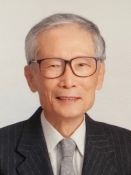
Jun Kondō was a Japanese theoretical physicist.

Curtis Gove Callan Jr. is an American theoretical physicist and the James S. McDonnell Distinguished University Professor of Physics at Princeton University. He has conducted research in gauge theory, string theory, instantons, black holes, strong interactions, and many other topics. He was awarded the Sakurai Prize in 2000 and the Dirac Medal in 2004.

Sankar Das Sarma is an India-born American theoretical condensed matter physicist, who has worked in the broad research topics of theoretical physics, condensed matter physics, statistical mechanics, quantum physics, and quantum information. He has been a member of the Department of Physics at University of Maryland, College Park since 1980.

Alexander Leonidovich Kuzemsky is a Russian theoretical physicist.
Narasimhaiengar Mukunda is an Indian theoretical physicist.
The numerical renormalization group (NRG) is a technique devised by Kenneth Wilson to solve certain many-body problems where quantum impurity physics plays a key role.

Patcha Ramachandra Rao was a metallurgist and administrator. He has the unique distinction of being the only Vice-Chancellor (2002–05) of the Banaras Hindu University (BHU) who was also a student (1963–68) and faculty (1964–92) at that institution. From 1992 to 2002, Rao was the Director of the National Metallurgical Laboratory, Jamshedpur. After his tenure as Vice-Chancellor of B.H.U., in 2005, he took the reins of the Defence Institute of Advanced Technology (DIAT) as its first Vice-Chancellor. He was to serve DIAT until his superannuation in 2007. From 2007 till the end, Rao was a Raja Ramanna Fellow at the International Advanced Research Centre for Powder Metallurgy and New Materials, in Hyderabad, Andhra Pradesh.
The Kondo model is a model for a single localized quantum impurity coupled to a large reservoir of delocalized and noninteracting electrons. The quantum impurity is represented by a spin-1/2 particle, and is coupled to a continuous band of noninteracting electrons by an antiferromagnetic exchange coupling . The Kondo model is used as a model for metals containing magnetic impurities, as well as quantum dot systems.
Palle Rama Rao FREng is an Indian scientist noted for his contribution to the field of Physical and Mechanical Metallurgy. He has collaborated and conducted research activities for over dozen universities and associations all over India and abroad. He has been honoured with the titles of Padma Vibhushan in 2011 by president of India for his contributions to scientific community. He is acting as the chairman, Governing Council, International Advanced Research Centre for Powder Metallurgy & New Materials (ARCI), Hyderabad.
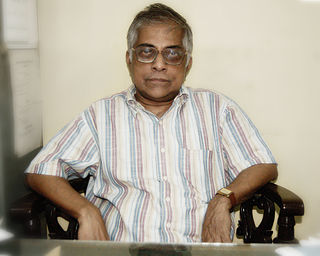
Amitava Raychaudhuri is an Indian theoretical particle physicist. He is Professor Emeritus at the Physics Department of the Science College, University of Calcutta where he earlier held the Sir Tarak Nath Palit Chair Professorship. He is the nephew of another renowned Indian physicist, Amal Kumar Raychaudhuri.
Abhishek Dhar is an Indian physicist specialising in statistical physics and condensed matter physics. He is a Professor in the International Centre for Theoretical Sciences, Bangalore.
Gillian Anne Gehring is a British academic physicist, and emeritus Professor of Physics in the Department of Physics and Astronomy at the University of Sheffield. She was the second woman in the UK to become a Professor of Physics and in 2009 won the Nevill Mott Medal and Prize.
Krityunjai Prasad Sinha was an Indian theoretical physicist and an emeritus professor of Indian Institute of Science. Known for his research in solid state physics and cosmology, Sinha was an elected fellow of all the three major Indian science academies – the Indian National Science Academy, the Indian Academy of Sciences, and the National Academy of Sciences, India. In 1974, the Council of Scientific and Industrial Research, the apex agency of the Government of India for scientific research, awarded him the Shanti Swarup Bhatnagar Prize for Science and Technology, one of the highest Indian science awards, for his contributions to physical sciences.
Deepak Dhar is an Indian theoretical physicist known for his research on statistical physics and stochastic processes. In 2022, he became the first Indian to be awarded the Boltzmann Medal, the highest recognition in statistical physics awarded once every three years by IUPAP, for exceptional contributions to the subject.
Madan Rao is an Indian condensed matter and biological physicist and a senior professor at National Centre for Biological Sciences. Known for his research on molecular dynamics on cell surface, Rao is an elected fellow of the Indian Academy of Sciences and the Indian National Science Academy. The Council of Scientific and Industrial Research, the apex agency of the Government of India for scientific research, awarded him the Shanti Swarup Bhatnagar Prize for Science and Technology, one of the highest Indian science awards, for his contributions to physical sciences in 2004.
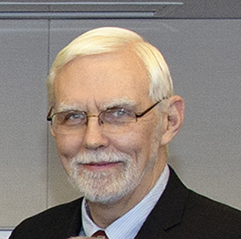
G. Peter Lepage is a Canadian American theoretical physicist and an academic administrator. He was the Harold Tanner Dean of the College of Arts and Sciences at Cornell University from 2003 to 2013.
